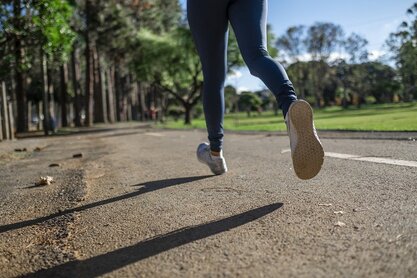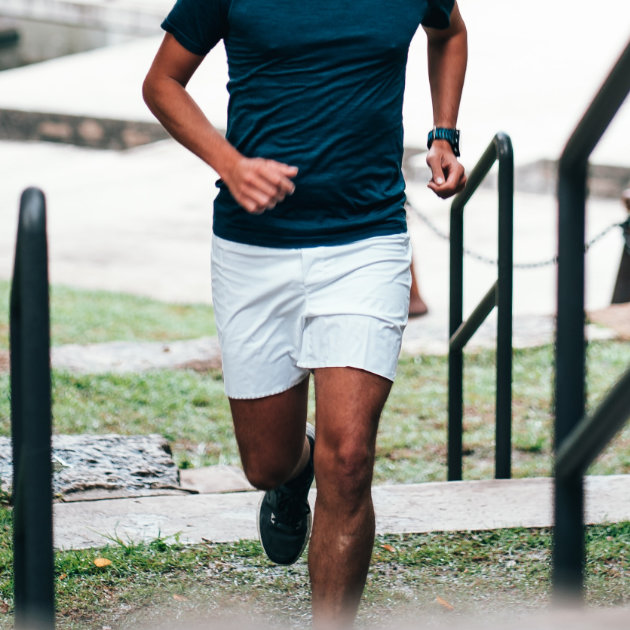|
Running involves a motion with high impact and injuries are common. There are many things that you can do to prevent this, from wearing the right shoes to running on more gentle terrain. It’s important to understand common injuries, how to treat them, and prevent them.
Approximately 30% to 40% of runners will experience at least one of these five most common injuries. Knee Injury Knee injury affects 30% of runners and it can be caused by issues such as soft tissue mobility, lack of strength, and flexibility. What to do? Stretching and strengthening the muscles around the knees, even hips muscles and hamstrings are a crucial part of preparing yourself for a run. Shin Splints This injury is most likely to happen at the beginning of training. Shin splints are common among runners in high school and runners who had time off before going back to running. The injury is caused by overtraining, and appropriate rest is important to prevent further injuries. Improve flexibility of hips, calf and ankles to prevent the injury. IT Band Syndrome The IT band is the fibrous band that supports the outside of the knee. IT band syndrome is the second most common injury among runners. It’s important to strengthen the muscles which control stability, especially the hips and glutes. Also, it can be very beneficial to improve balance. Use a foam roller and do exercises such as lunges, leg raises and bridge exercises. On top of this, yoga and pilates can be helpful to increase flexibility and strength. Achilles Tendinitis This injury is common among hill runners and sprinters. The symptoms include pain around the tendon and swelling. Again, flexibility, balance and strength play an important role. If you have Achilles tendinitis rest and put some ice on it. Also stretching the calf area and heel can help. What type of exercise should you do? Try calf raises and toe-to-wall stretches. Plantar Fasciitis This injury is caused by the repetitive nature of running and it mostly happens to those who already injured their foot. Rest is crucial here. Also, foot and toe stretches can help you deal with the pain. You can wear compression socks, proper footwear to help you deal with the weight-bearing pressure of the injured foot. Should You Run When Injured? The answer to this question depends on how severely you are injured. Each one of us is different. However, it’s important to stress that you shouldn’t make this decision on your own. Go and see a doctor before running while injured. The answer to this question is: “Yes if your doctor says so.” How to Prevent Injuries from Happening? Many injuries can be self-inflicted if you are increasing intensity, changing running shoes or terrain, or using improper training and stretching. You should talk to your physical therapist about factors that can lead to injuries and help them treat these. If you have a personal trainer, keep in mind that they are not equipped to diagnose an injury or treat one. Still, they can give you tips on proper terrain and factors that play a role in the injury. Two also important things to do in order to prevent injuries are starting slowing and making sure you have enough rest between two runs. Avoid increasing your weekly mileage by more than 10%. Also, find some time to rest by switching to other physical activities such as yoga or swimming, riding a bike. If you are an avid runner, always keep in mind that you need one full day of rest every now and then. https://www.gildshire.com/five-common-running-injuries-and-how-to-avoid-them/
0 Comments
You’ve been sent for an MRI and there you are with the scan results in your hand. The report is telling you that your knee has a range of abnormal findings including a meniscus tear. Uh oh! This must be why your knee hurts…well maybe not. The reality is that this tear may have been there long before the knee pain existed. Often scan findings are linked to a person’s cause of pain however this relationship between knee pain and abnormal MRI results is not always precise. Not only meniscus tears but cartilage defects, bone marrow lesions, osteophytes and other features of osteoarthritis can be commonly found on knee scans. It’s never been more important that scans must be interpreted with caution. We now have unprecedented access to imaging services with over 27,000,000 medical imaging investigations occurring annually in Australia. This costs their medicare a whopping $4 billion yearly. So what are the facts? A large review study published in 2018 looked at 3761 knees in people who were pain free. From a collection of 44 studies this is what they found:
Should I get a scan? The answer to this isn’t a straight forward yes or no but there should be a good reason to send someone for a scan. Guidelines were developed to prevent unnecessary knee radiographs following knee trauma, these are called the Ottawa Knee Rule. . The indications for a x-ray are as follows:
So what does this mean for you? Just because you have abnormal findings on a scan does not mean it’s the cause of your knee pain. Again, we can’t determine someone’s pain source purely from a scan. This is where it is important to always match a person’s clinical history with their medical imaging – and this is what good health practitioners do! Chances are that some of those scan findings were probably there long before your pain existed. Summary
If you have any questions, please let us know! Dominick [email protected] |
AuthorThe therapists at SRVPT have a variety of backgrounds and are interested in sharing our knowledge with you! Check out their bios for more specific information. Archives
April 2024
Categories
All
|
|
San Ramon Valley Physical Therapy proudly serves the Alamo, Danville, San Ramon, Dublin, Pleasanton areas, along the 680 corridor.
© COPYRIGHT 2023 ALL RIGHTS RESERVED |



 RSS Feed
RSS Feed
